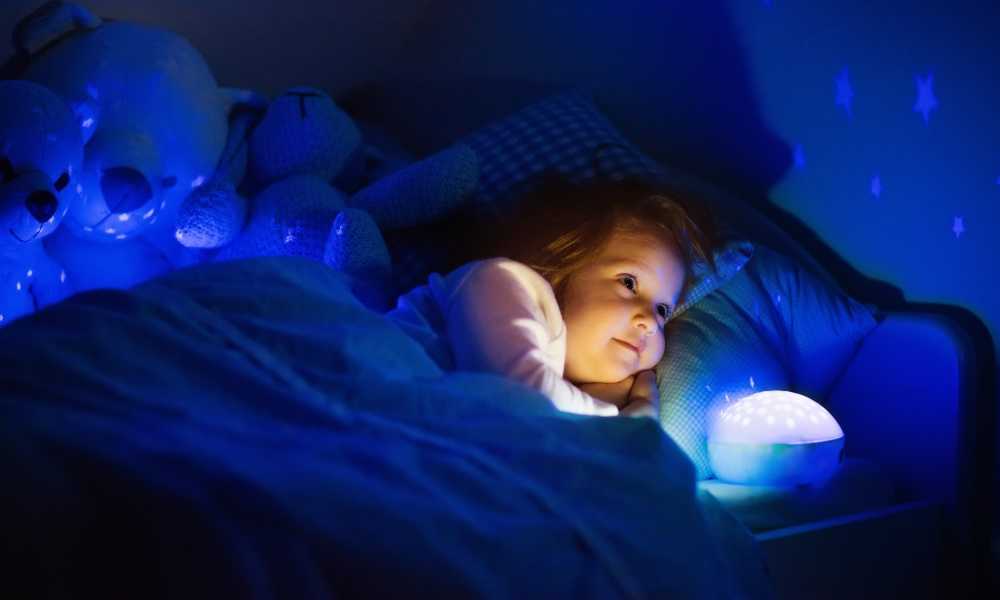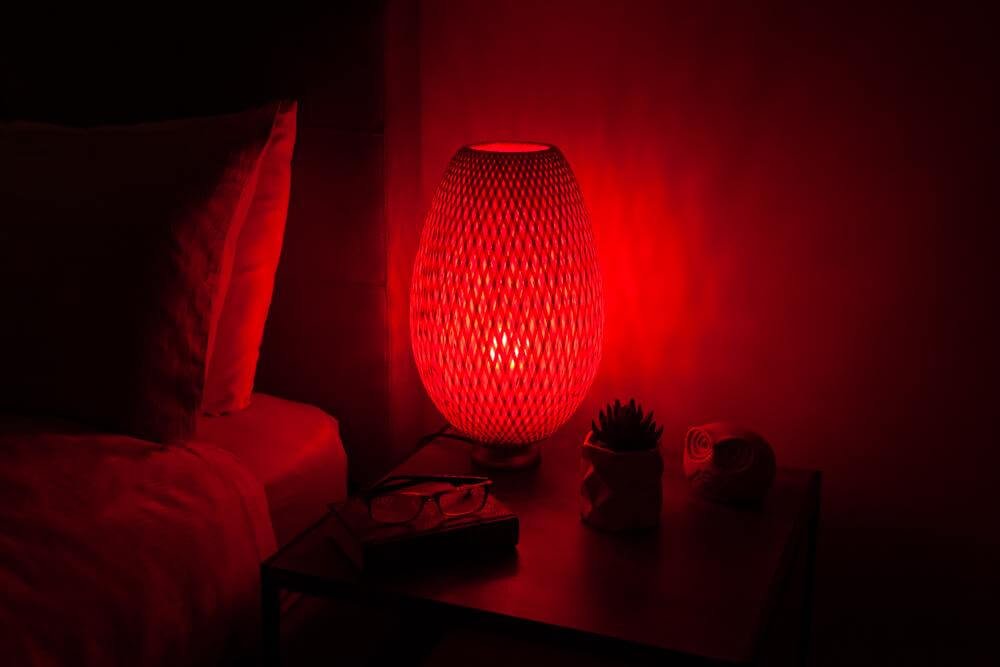Do you want to know What color led light helps you sleep? Nowadays everyone looking for relaxation. No one wants to be disrupted by sleep problems. That’s why we are analyzing all types of lights because different types of lights affect our brain activity and make us active or sleepy people on the very basis of led lights influence.
We all know how important sleep is, but with our busy schedules, it can be difficult to get the rest we need. Many people prefer to use an eye mask instead of sleeping pills because they are a more natural way to fall asleep and stay asleep. If you’re looking for something more effective than an eye mask, colored led lights are a great alternative.
Table of Contents
What color led light helps you sleep?
The color that makes you sleep is blue. Blue hues have a calming effect on the body and are known to relax the mind. Blue is believed to be the color that relieves depression, making it a favorite color among those suffering from depression.
Blue light is better than white light at regulating sleep patterns, and therefore, studies have shown that blue light has a greater ability to induce sleep. So, if you want to reduce your stress and anxiety and help you unwind before you go to bed, try to wear blue. You’ll sleep better and so will your brain.
Blue is the color of calmness and relaxation, which is why so many bedrooms are painted this color. Blue can be used in the office to promote a sense of peace and relaxation, but it can also be used to create a sense of urgency. In the right situations, blue is the color that will help you to sleep fast.
Blue led lights can help with depression
People with depression tend to have low levels of serotonin and melatonin, two chemicals that help regulate sleep and mood. Blue light helps increase these chemicals because it tricks your brain into thinking it’s daytime. If you’re feeling blue, try aiming some blue light at yourself while you’re winding down in preparation for bed. Make sure you buy a good quality led light though, as cheaper ones might cause eye strain or headaches.

Orange led lights reduce anxiety
Many people worry about getting enough sleep. If you’re one of them, you may consider installing orange LED lights in your bedroom to promote a sense of calmness and reduce anxiety when it’s time to sleep. These lights won’t cause screen envy, which is especially helpful if you use your device before bed. Besides that, they make an easy complement to any modern interior design scheme, as these bulbs come in many sizes and shapes.
If you’re not sure whether you should install orange led lights in your bedroom, consider that they have several proven benefits. First, orange led lights can increase your chances of falling asleep faster by reducing anxiety and stimulating dopamine production, a hormone that is responsible for feelings of well-being.
They also have calming effects on those who suffer from ADHD and autism. And since they don’t interfere with sleep patterns when used during daylight hours, they won’t make insomnia worse.

Green led lights to keep you awake
Green led lights to keep you awake If you are interested in buying a light to help with sleep, then it is important to understand that different colors of light affect us differently. Blue and green wavelengths stimulate our brains more than red and orange ones.
This means that if we want to use light therapy for sleep, we should choose a light that emits a wavelength similar to daylight: white or blue-white. White LEDs are an affordable option for home use because they can be used on their own or combined with other colors of LEDs.

5 Effective Ways LEDs Can Improve Your Sleep Quality
We should make sure that the LEDs we use in the bedrooms are not too bright. The color temperature of the light also matters. We should also make sure that we don’t have any other light sources in the room.
We are surrounded by artificial light from all sides. It is one of the most common culprits of sleep deprivation.
The use of LEDs can improve your sleep quality in 5 different ways:
- They emit natural light that is less harsh and more relaxing than other artificial lights.
- They have a lower level of blue light that can disrupt your circadian rhythm and make it difficult to fall asleep.
- They are easier on the eyes, making them more comfortable to work with during the night.
- They don’t emit any heat, making them safer to use in areas where you want to avoid overheating like bedrooms or the living room.
- They are energy efficient, which means they use less power and cost less money over time.
What are the different kinds of lights?
Different types of light bulbs are available in the market, and each one is used for a different purpose. One can choose from halogen, fluorescent, incandescent, LED light bulbs, or even natural daylight.
Halogen Lights:- Halogen lights are common in offices and other commercial spaces because they provide bright white light. They also produce a lot of heat which makes them unsuitable for use in homes.
Fluorescent Lights: Fluorescent lights are more energy-efficient than other types of bulbs but they produce less light and have a shorter lifespan. LED lights last as long as fluorescents but they give off less heat which makes them more suitable for use in homes.
How Does Light Help You With Sleep?
Light is a very important factor in our lives. It helps us to stay awake during the day and get to sleep at night.
Light is essential for maintaining our circadian rhythm, or the natural 24-hour cycle that tells us when to sleep and when to be awake. Light helps regulate melatonin levels in the body, which is a hormone that makes us feel sleepy. When we are exposed to light at night, melatonin levels are suppressed and we stay awake longer. This means that if you want to fall asleep faster at night, you need to avoid artificial light from screens an hour before bedtime.
There are two types of light that can help with sleep: blue and amber. Blue light suppresses melatonin production, which helps people to stay awake during the day. Amber light stimulates melatonin production, which helps people fall asleep at night.
Colors that make you sleep faster
There is a lot of research on the effect of colors on sleep. According to the research, blue is a color that can help you sleep faster. This is because blue contains wavelengths that are calming and soothing. It also has been shown to reduce anxiety and stress, which can be related to sleeplessness.
The other colors that help with sleep are green, purple, pink, and yellow. These colors are not as effective as blue but they still have some effect on the body’s natural circadian rhythm and melatonin production in the brain.
colors that calm your brain before bed
It is a common belief that blue light from screens suppresses the production of melatonin, which makes it hard to fall asleep. This is why many people use blue-light-blocking glasses before bed.
However, there are other colors that can help you sleep better. One study found that red and green lights might be able to suppress melatonin production better than blue light. This means that you should use red or green lights before bedtime if you want to sleep better.
colors that boost your energy and help to fall asleep
The colors that you surround yourself with can have a significant impact on your mood. Some colors have been found to boost energy, while others can help you fall asleep.
The color red is associated with power, which is why it’s often used in corporate settings. Red boosts energy and helps people feel more confident. It also stimulates appetite and increases blood flow to the brain.
Blue has been shown to increase productivity and concentration. This may be due to blue’s calming effect on the brain, which reduces stress levels and helps people sleep better at night.
Color that helps with REM
The colors that are most beneficial for REM are blue, purple, and green. These colors help with REM because they suppress the production of melatonin. This is the hormone that makes you feel sleepy at night. We should avoid using reds and yellows as these colors will make it more difficult to fall asleep.
Tips for Choosing the Best Colors for Sleep
One of these factors is light. The color, brightness, and intensity of light can have an effect on circadian rhythms and melatonin production, which in turn have an effect on sleep patterns.
The color of the walls, bedspread, and linens should be soft, soothing, and not too bright. White or light colors are recommended as they are easier on the eyes and provide a sense of cleanliness.
When it comes to picking out paint for your bedroom, you should choose colors that are not too strong or intense. The best colors for sleep are pastels like pink and light blue.
Choosing the right colors for your bedroom is important. The colors you choose can affect how well you sleep and how much energy you have during the day.
Here are some tips to help you choose the best colors for your bedroom:
- Choose cool, tranquil colors that are not too bright or bold.
- Avoid using reds and yellows as these can have a negative effect on your sleep patterns.
- Keep in mind that different people respond to color differently so experiment with what works best for you.
Conclusion
The best color of light to help you sleep is blue-white. These lights tend to mimic daylight and are most effective at canceling out other forms of light that can keep you awake at night. To adjust your light settings for sleeping well, turn off overhead lighting and lamps as much as possible, as well as other electronics like televisions and computers.
Related Post:
- Best Smart LED Strip Lights
- Soft White Vs Daylight
- Best Rechargeable Led Light Strip
- How Long Do Led Strip Lights Last?
- What Size Mirror For 60 Inch Vanity?
- How Much Power Does A 5050 Led Strip Use?